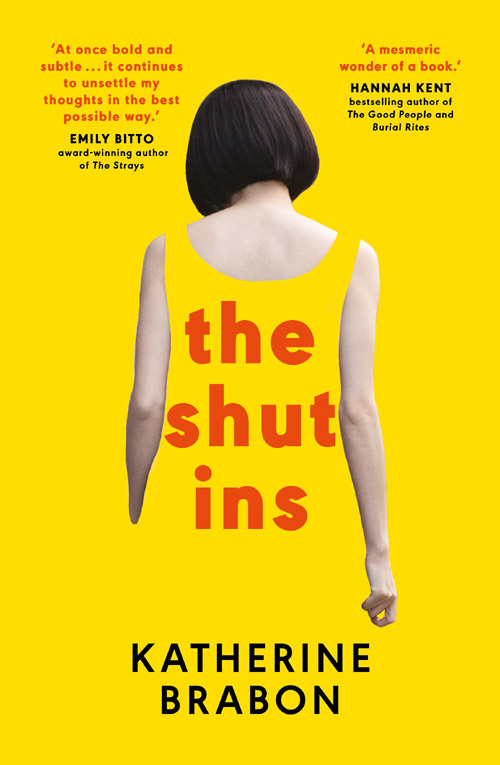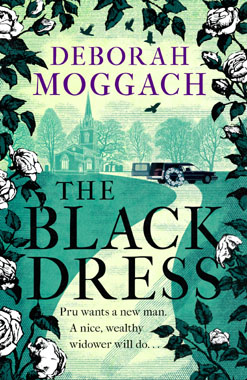Walkley Book Award 2021 longlist
27 November 2021
Nine non-fiction titles make up the longlist of this year’s Walkley Book Award, including Witness, by Louise Milligan, The Winter Road, by Kate Holden, and Lowitja: The authorised biography of Lowitja O’Donoghue, by Stuart Rintoul.
The Walkley Book Award celebrates Australian writers who take enduring subjects from news, eyewitness accounts, investigations and history. Their books bring readers immersive detail, clear analysis and new revelations.
The Walkley Book Award differs from the Walkley Awards for Excellence in Journalism, which are possibly the better known of the Walkley prizes. The shortlist will be announced in December, and the winner will be named on 11 February 2022.
RELATED CONTENT
Australian literature, writing
Ridley Scott blames oblong obsession for The Last Duel’s poor showing
26 November 2021
It seems Ridley Scott’s latest feature The Last Duel isn’t doing too well at the box-office, and the celebrated director is pointing the finger of blame at smartphones, and millennials apparent obsession with them:
“I think what it boils down to – what we’ve got today [are] the audiences who were brought up on these fucking cell phones,” Scott said. “The millennian, [who] do not ever want to be taught anything unless you told it on the cell phone… This is a broad stroke, but I think we’re dealing with it right now with Facebook. This is a misdirection that has happened where it’s given the wrong kind of confidence to this latest generation, I think.”
By that rationale though wouldn’t most movies, not just historical dramas, be doing poorly at the box-office?
RELATED CONTENT
JKF: why can’t we let him RIP?
26 November 2021
JFK Revisited: Through the Looking Glass (trailer), is a documentary by American filmmaker Oliver Stone, a follow up of sorts to his 1991 drama feature JFK. “Conspiracy theories are now conspiracy facts,” Stone asserts, having presumably combed through many of the previously withheld papers in relation to the 1963 assassination of late US President John F. Kennedy, released by Donald Trump in 2018.
Not all film commentators are in agreement with the arguments Stone presents though. And for a cold light of day assessment of Kennedy’s murder: this 2003 article published in The Guardian, written by Kenneth Rahn:
The real story of the assassination is this: Kennedy was killed by one misfit guy, a cheap but effective rifle, a good vantage point from the building where he worked and a run of fortuitous events. It is over. We must realise that this horrible event was not some evil plot. It was the product of chance, not conspiracy.
RELATED CONTENT
Bookseller boss worried by slow post lockdown return to city centre
26 November 2021
John Forsyth, chairman of Dymocks Group, one of Australia’s oldest booksellers, is concerned local government isn’t doing enough to rejuvenate Sydney’s CBD, particularly in the wake of recent pandemic imposed lockdowns. He isn’t alone. Businesses in other commercial centres across Greater Sydney are also feeling the pinch. They’re urging municipal councils, many of whom are facing elections in early December, to do more to bring people back into city centres.
But I’m not sure it’s that simple, and other ways to support struggling businesses may need to be considered. Some workers don’t want to return to central business districts. Having been forced to work from home, many are content to stay there. And who can blame them? Working from home means less time lost to commuting, commuting in the first instance, and more time to spend with the family, and on other things they find important. These people are still supporting small businesses, but ones closer to home, rather than in the city.
It’s long been my thought that advances in technology were always going to bring about this sort of shift in work practises eventually, the pandemic simply hastened the inevitable. What happens in the few months will be pivotal. Many organisations are paying rent on buildings that are virtually unoccupied. How will they respond? By instructing workers to return? Or by scaling down office space? But with some workers looking to relocate to rural regions, and renewed talk of four day working weeks, will we ever see the return of city workers to pre-pandemic levels?
RELATED CONTENT
Who is M in The Shut Ins by Katherine Brabon?
25 November 2021

NOTE: this article is choke full of SPOILERS for The Shut Ins by Katherine Brabon. If you haven’t read the novel, bookmark this page and come back when you have.
The Shut Ins is the second novel by Melbourne based Australian author Katherine Brabon, following up her 2016 Vogel Award winning debut, The Memory Artist. Mainly set several years ago in Japan, The Shut Ins recounts five people’s varying experiences of hikikomori, a Japanese term used to describe those who, for whatever reason, feel compelled to cut off all contact with the outside world, and confine themselves to their room. Sometimes they stay locked away for years before leaving their self-imposed internment.
Through the thoughts of five characters, Brabon takes us into one person’s hikikomori journey, a man in his late twenties, called Hikaru Sato, who has stayed in a room at his parent’s apartment for three years. We first learn of Hikaru’s story through Mai Takeda, an old classmate of his, who one evening after work runs into his mother, Hiromi Sato, ten years after Mai last saw him at high school. Long story short, Hiromi asks for Mai’s help in persuading Hikaru to leave his room. But Mai has problems of her own.
She recently married a conservative salaryman, known only as J, who expects her to give up working and start a family with him. When we meet Mai, she is anything but enthusiast about the prospect, and seems, if anything, to have a closer emotional bond to the reclusive Hikaru, whom she hasn’t seen or spoken to in a decade. In addition to Mai’s perspective, we hear from Sadako, a young woman working in Tokyo as a hostess, who entertains J – presumably without Mai’s direct knowledge – while he’s on week-long business trips to the Japanese capital.
The stories of Hiromi, and in the third act, her son Hikaru, are also explored, along with the thoughts of an unnamed Australian woman, who is travelling alone in Japan, and is interested in hikikomori. But perhaps the most intriguing character in the book, is one we don’t meet, a woman known only as M. The Australian traveller, who I’ll refer to as the Narrator, said she and M, who is Japanese, lived in the same share house, while they were studying at a university in Melbourne. But who is M, and why is she referred to only by the letter M? Is M a pseudonym for Mai, Mai Takeda? It’s tempting to think so for several reasons.
Mai’s name starts with the letter m, while the Narrator refers to her friend as M. How obvious. We also know Mai went missing at some point in 2014. Meanwhile the Narrator – who may or may not be an alter-ego of Brabon’s – writes that M, who becomes known to us through the Narrator’s notes, “no longer lives in Japan.” But unlike the stories of Mai, Hikaru, Hiromi, and Sadako, which are dated during 2014, we don’t know when the Narrator penned her notes. It may have been several years later. To illustrate this point, an ABC article tells us Brabon visited Japan in 2014, and 2017, while The Shut Ins was published in 2021.
It’s reasonable then to believe Mai made her way to Australia, as she created a new life for herself, and spent several years studying there. We later hear that M left Australia, and was working as a translator in Malta. She certainly didn’t seem keen to return to Japan. But there are other clues. At the time M and the Narrator were flatmates, we learn M had recently left a relationship. Could that be Mai’s marriage to J? M told the Narrator she had, until arriving in Melbourne, only seen herself through the “mirror” of other people.
Could this have been a reference to the expectations Mai’s family, and J, had placed on her? To marry – before she was “too old” – and have children. The Narrator also makes the comment that M’s long dark hair touched her elbows. We were also told Mai’s hair had been equally as long, when she was at high school. There really seems to be little doubt. M is Mai. And after reading about her somewhat cloistered life in Japan, we’re left hoping Mai did escape, and make a new start. But it’s not that straightforward.
In an interview at Theresa Smith Writes, Brabon said she has a friend called Mio who lives in the Japanese city of Shizuoka. In her notes, the Narrator tells us she stayed with M’s parents in Shizuoka. Mai, however, and her parents, lived in Nagoya, although Mai was born in the Gifu Prefecture. But it is possible Mai’s parents later moved to Shizuoka. What’s not so plausible perhaps is their “forgiving” Mai for leaving her marriage to J, something they had expected of her, to say nothing of her skipping the country to live as she chose.
Does it then seem likely her parents would go so far as to accommodate a friend of hers, such as the Narrator, who they may have viewed as aiding Mai in achieving her ambitions? At this point M and Mai are beginning to look like quite different people. But what then of M’s unnamed Japanese male friend, whom she suggested the Narrator meet whilst in Japan, as he could tell her more about achiragawa, a term meaning “the other side”. Achiragawa may be a place, one safer than their present environment perhaps, that hikikomori, in a sense, aspire to reach.
Could M’s male friend be Hikaru? If anyone could talk about achiragawa, that would surely be Hikaru. The male friend, who now lives in America (the other side?), happened to be visiting Japan at the same time the Narrator was there. We learned Hikaru liked America, it was one of the few topics he discussed with Mai, while they were at high school together. In emails to the Narrator, M’s male friend spoke of his “long new life” in America. This suggests the existence a previous “old” life, perhaps one he wanted to distance himself from.
But if the male friend is Hikaru, and M isn’t Mai, how does she know about Hikaru? Could that connection be through M’s mother, who was a social worker? Possibly her mother’s work involved helping rehabilitate shut-in people like Hikaru, after they decide to return to a more normal life. While M’s parents resided in Shizuoka, and Hikaru lived in Nagoya, it is possible M’s mother travelled to Nagoya for work, or it might be Hikaru stayed in a facility in Shizuoka after leaving, or more to the point, being removed from his room.
The Narrator also tells us “I was in Japan, alone, when the story of Mai Takeda came to me.” That also would suggest M and Mai are different people, but not necessarily. It could be M spoke more about her past life once the Narrator landed in Japan, since she was potentially meeting Hikaru. But in the end, we’re left with a satisfying mystery as to whether M is Mai, and M’s male friend is Hikaru. The Narrator and the male friend had planned to meet each other, but at the last minute, literally as she was approaching the appointed meeting place, the Narrator decided not to go ahead.
She had alluded to a reluctance to meet face to face, having become comfortable with her more anonymous, though in-depth, email correspondence, with M’s male friend. It is also a savvy outcome on Brabon’s part. Because the in-person meeting doesn’t proceed, we do not establish that M’s male friend is actually Hikaru, nor by extension do we ascertain that M is Mai. This looks to be a question we will continue wondering about.
RELATED CONTENT
books, Katherine Brabon, novels
One hundred Notable Books of 2021
24 November 2021
One hundred Notable Books of 2021, compiled by The New York Times. Quite a few titles I recognise, many I don’t. Be nice to see more Australian work making the cut, particularly in the fiction segment, but overall an impressive list of books, spanning fiction, non-fiction, poetry, and memoir categories.
RELATED CONTENT
King Richard, a film by Reinaldo Marcus Green
24 November 2021
American actor Will Smith depicts Richard Williams in King Richard (trailer), a bio-pic directed by Reinaldo Marcus Green about the father of American tennis stars Venus and Serena Williams, and his efforts to coach his young daughters after recognising their talent.
RELATED CONTENT
film, Reinaldo Marcus Green, trailer
David Stratton and the future of cinema
24 November 2021
Renowned film critic David Stratton has recently written a book, My Favourite Movies (published by Allen & Unwin, November 2021), which as the title suggests, is a selection of his personal favourites. But having watched close to what he estimates to be thirty thousand films during his life, choosing just one hundred and eleven titles to feature in My Favourite Movies, was no easy task, as Stratton explained in a recent interview with FilmInk.
In the course of the discussion, he also offered his thoughts on the current state of cinema, something I’ve been wondering about, especially in the light of the pandemic, and the impact lockdowns have had on the industry.
There have been tremendous changes in every area to do with film. The opportunities for commentary on film have been reduced and of course the film industry itself has changed dramatically. I wonder sometimes whether the cinema will survive.
That’s bleak commentary coming from one of Australia’s best known film critics.
RELATED CONTENT
The Black Dress, by Deborah Moggach
23 November 2021

In American film director David Dobkin’s 2005 movie Wedding Crashers, we see Owen Wilson and Vince Vaughn, known as John and Jeremy respectively, getting a kick out of showing up at strangers’ weddings. They’re both outgoing and personable, and quickly ingratiate themselves with the bridal party and their guests. Their charade is so convincing, everyone believes John and Jeremy are somehow part of the family.
It could be Prudence, the protagonist in The Black Dress (published by Hachette Australia, July 2021), the sixteenth novel of British author Deborah Moggach saw John and Jeremy in action, and decided to take a leaf out of their book. Instead of weddings though, seventy-something Pru, having purchased a black dress from a charity shop, goes to funerals. It’s not so much that she enjoys funerals, but you know, there’s bound to be a well-off widower or two in attendance.
Right about now you might be wondering what Pru is thinking. But consider: her husband recently left her, her adult children are busy with their own lives, and her friends are also otherwise occupied. What then is wrong with going to a funeral here and there? While Pru’s plan to hook-up with eligible widowers seems like a good idea, she soon discovers, to borrow the words of William Shakespeare, the course of true love never did run smooth…
RELATED CONTENT
Deborah Moggach, fiction, TBR list, writing
What Ann Patchett learned about writing from Snoopy
22 November 2021
I can’t say I’m the biggest fan of Snoopy – the canine comic creation of the late Charles M. Schulz – though I still read the comic strip back in the days when people used to buy the news in print. But Snoopy was no backyard pet. He led what today we’d call a rich inner life, variously imagining himself – among other things – to be a World War I fighter pilot, a member of the Foreign Legion, a Beagle Scouts leader, and a sports star.
Snoopy also saw himself as an author, at least an aspiring author, and his efforts to write and be published – along with the all too frequent rejections – were something that American author Ann Patchett, whose novels include Bel Canto and Commonwealth, took inspiration from:
Snoopy taught me that I would be hurt and I would get over it. He walked me through the publishing process: being thrilled by acceptance, ignoring reviews, and then having the dream of bestseller-dom dashed: “It’s from your publisher,” Charlie Brown tells Snoopy. “They’ve printed one copy of your novel. It says they haven’t been able to sell it. They say they’re sorry. Your book is now out of print.”
RELATED CONTENT
